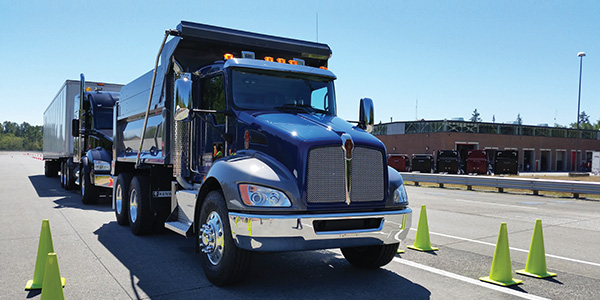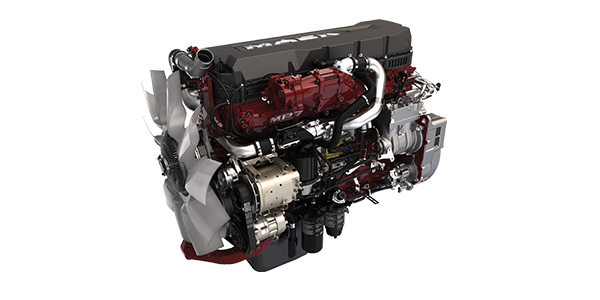A truck’s warranty is like a ticking clock, with only a short window of time for a part’s fault (if it has one) to reveal itself. There’s little more frustrating than having a 45-day warranty and having something break on day 46. Adding to the complexity of the process is the need to do everything perfectly in order to submit a successful warranty claim.
The standard of proof has to be very high for a truck company to accept a warranty claim—if anything is missing or any reason is given to doubt the claim, it will not be successful. In order to have a warranty claim successfully processed, there has to be a paper trail, and it has to be ironclad.
For a long time, that term—“paper trail”—was a literal one, and with it came the pitfalls of tracking everything by paper: potential errors, differing methods of tracking, lost paperwork, etc.
This is where the seemingly infinite amount of data streaming off of today’s trucks and parts comes in. There are two major benefits provided by data tracking when it comes to warranties: one is that it tracks everything step by step, leaving a detailed trail of documentation that doesn’t rely on paper or idiosyncratic shop tendencies; the second is that it saves time in the warranty claims process as a result of this detailed tracking. And of course, there’s the higher chance of receiving the money from the company providing the warranty.
The role of telematics and data
Telematics companies that track truck data often get involved in the warranty process as well. To start with, they can be a second voice in the fleet’s claim, taking a look at the data and verifying that what the fleet’s claiming is what they see. But it goes beyond that.
Jeff Sweet, solutions engineer for Decisiv, describes data tracking as telling “the story of how the truck is repaired.”
According to Sweet, the main problem Decisiv’s Service Relationship Management (SRM) solution is set up to solve is that a fleet’s warranty department is typically mired in paperwork, documentation, standards and requirements. The data provides them with the ability to submit claims more quickly and with more visibility into where the process is with each claim.
When the process is automated, it lessens the responsibility on the individuals involved in the process—for instance, if the warranty administrator is on vacation when a claim goes through, the process can still proceed without a hitch, because everyone has access to the necessary asset details and history needed to proceed.
“Our ability to document the service process with the SRM system extends from our ability to capture all of the repair information from the initial point of inspection,” says Mark Wasilko, vice president of marketing with Decisiv. “It lets us bring in past service history. It lets us lay out the entire repair order process all the way through estimate approval, invoicing and closing the repair order. And it lets us incorporate the entire service history for that asset in the process. So, with our system, when an asset is in the shop for repair, we have a portal for the fleet manager, who can determine where its repair status and what its projected return to service is. Our ability to collect and assemble that information also has tremendous benefit in expediting the warranty process.”
“Without a system that is tracking and monitoring repairs for possible warranty repairs, it is almost impossible for fleets to capture all of their warranty repairs and file the warranty claims,” says Renaldo Adler, industry principal for asset maintenance with the Trimble Transportation Enterprise. Trimble’s warranty tracking software keeps track of three types of warranties: OEM, Extended Warranty Coverage and Aftermarket Part Warranty (more on aftermarket warranties in the sidebar on the right).
ROI is difficult to pin down from this data, but businesses often speak in terms of pain points, and Sweet says that for fleets, the warranty process “is like a broken foot. They’ll notice it immediately when things get better.”
However, cautions Kurt Swihart, Kenworth’s marketing director, “like any process, we need the appropriate data portrayed correctly, and only that data. More data is only helpful if it clarifies the problem and improves claim adjudication.”
RELATED: Read more about the warranty process here.
Predictive possibilities
The use of this data goes beyond individual warranty claims—it can help identify persistent problems with particular trucks or parts, and help both fleets and OEMs get ahead of the potential need for replacements.
Neil Cawse, chief executive officer of Geotab, frames his company’s gathering of data as “getting in the middle with technical advice.” He says they can take the data from your truck and compare it to earlier models of the same truck, the same truck with a different engine, or similar trucks, and profile each of them for you.
He gives an example of how this would be used: “We’ll show you what the fuel pressure data looks like in the injectors for this vehicle vs. that vehicle. For example, we might see a consistent issue six months after you buy the vehicle, where the seals are going or something is happening in the injectors that needs to be dealt with.”
The truck OEMs themselves are collecting this type of data as well.
“We collect a lot of our own warranty data to try to determine what patterns are we seeing and if there’s anything we can do to get out in front of it,” says John Crichton, director of field service for International Trucks.
According to Stu Russoli, highway product manager for Mack Trucks, having access to this data can help fleets improve their uptime by being able to diagnose a truck remotely. This could mean the difference between scheduling a repair ahead of time or having the truck go down while it’s out on the road.
“Armed with this data, we are able in many cases to direct the unit to a repair location before a catastrophic failure occurs,” he says. “For intermittent issues, the data provides history to enable the technician to diagnose an issue with symptoms that may not be occurring at the time that the unit arrives at the repair facility.”
International’s Crichton says that this data could also help simplify things even more in the future as fleets move toward using more predictive maintenance.
“What fleets really want to try to avoid is the unplanned repair event,” he says. “They want to be able to schedule their repairs at the time the truck comes in for preventative maintenance or when the driver is down. We could also look at whether there’s a certain mileage interval where failure rates start increasing, and rather than running a vehicle until a part fails, maybe you build into your maintenance schedule that at a certain mileage, you change a part. Data helps both the OEM and the fleet make better decisions on turning some of those unplanned events into planned events.”
















